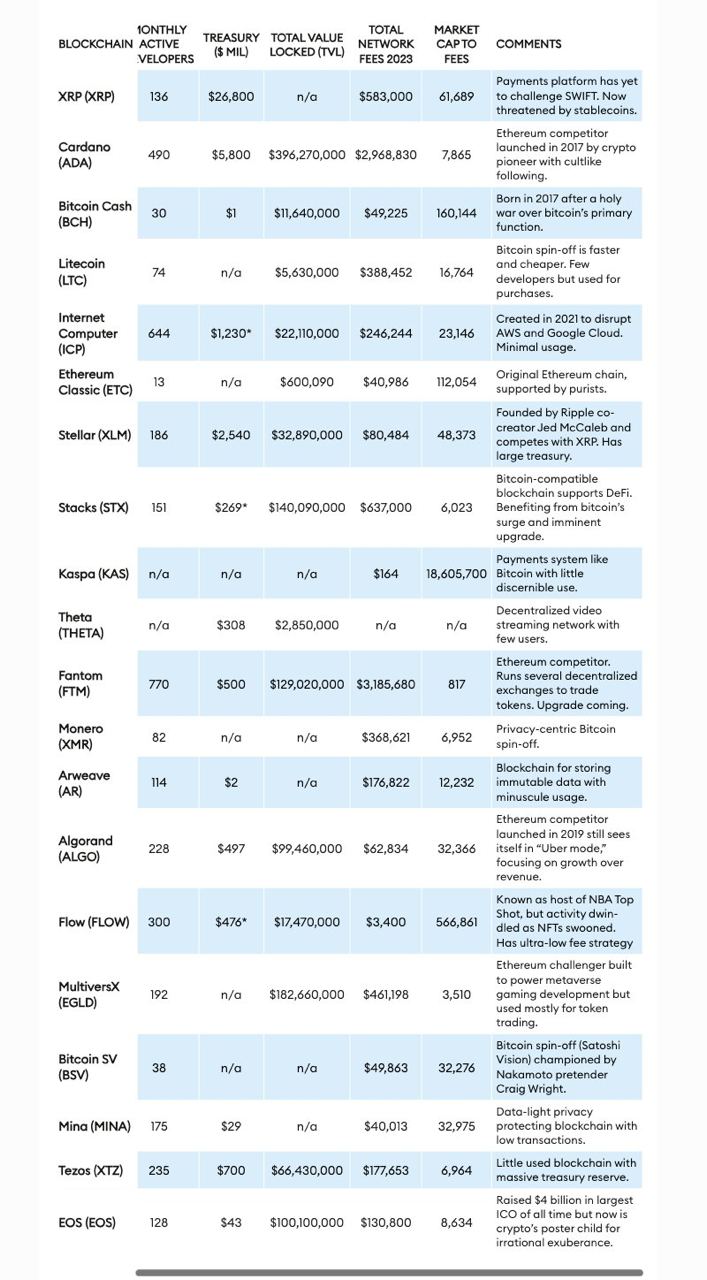Share this article
![]()
The number of tokens exceeds 14,000 and the cryptocurrency market capitalization reaches $2.4 trillion, but more is not always merrier. Forbes has identified a group of 20 cryptocurrencies called “zombie blockchains” that maintain high market value despite showing little to no real utility or user adoption.
The list includes well-known names such as Ripple (XRP), Cardano (ADA), Litecoin (LTC), Bitcoin Cash (BCH), and Ethereum Classic (ETC), all of which feature continuous operations and trading without fulfillment. For practical purposes.
The term “zombie blockchain” refers to blockchain projects that exist like the undead but show no signs of life in terms of utility or significant user base.
These tokens continue to exist, and sometimes even thrive financially, due to speculative trading and significant initial funding rather than having achieved their technical or practical goals.


Forbes analysts noted that Ripple’s XRP was initially designed to compete with the SWIFT banking network by facilitating rapid international bank transfers with minimal fees. However, it failed to disrupt SWIFT and currently relies heavily on speculative trading for its high market capitalization while generating minimal revenue from actual network use.
“Despite being largely worthless, the XRP token still boasts a market cap of $36 billion, making it the sixth most valuable cryptocurrency,” the analysts explained.
“Ripple Labs is a cryptocurrency zombie. XRP tokens are actively traded, worth about $2 billion a day, but for no other purpose than speculation. “Not only is SWIFT still going strong, but there are better ways to send payments internationally via blockchain, especially stablecoins like Tether, which is pegged to the US dollar and has a circulation of $100 billion,” he added.
Likewise, hard forks such as Litecoin, Bitcoin Cash, Bitcoin SV, and Ethereum Classic are valued at over $1 billion, but are underutilized and used more as speculative investments than real-world applications, according to Forbes.
These tokens often arise from disagreements within the developer community and persist due to historical significance or the inertia of speculative trading.
“What keeps these zombies alive is liquidity,” analysts said, citing a statement from one VC.
Analysts also cited ‘Ethereum killers’ such as Tezos (XTZ), Algorand (ALGO), and Cardano (ADA) as the main causes of this phenomenon.
Despite technological advancements and significant valuations, these tokens have not seen significant adoption or activity. They offer advanced transaction processing capabilities, but struggle to translate these capabilities into widespread acceptance or developer engagement.
“Some blockchain zombies seem to base their transactions solely on the popularity of their creators. Cardano, another Ethereum competitor, launched in 2017 after co-founder Charles Hoskinson had a falling out with his Ethereum co-founder Buterin.” Analysts have suggested that speculative interest in Cardano is primarily driven by the reputation of its founder.
Forbes’ report also addresses the lack of governance and financial accountability mechanisms in these blockchain companies, which operate without regulatory oversight or obligations to shareholders. This complicates efforts to assess its viability or financial health, as seen in cases such as Ethereum Classic, which remains actively trading despite a serious security breach.
Share this article
![]()
![]()

